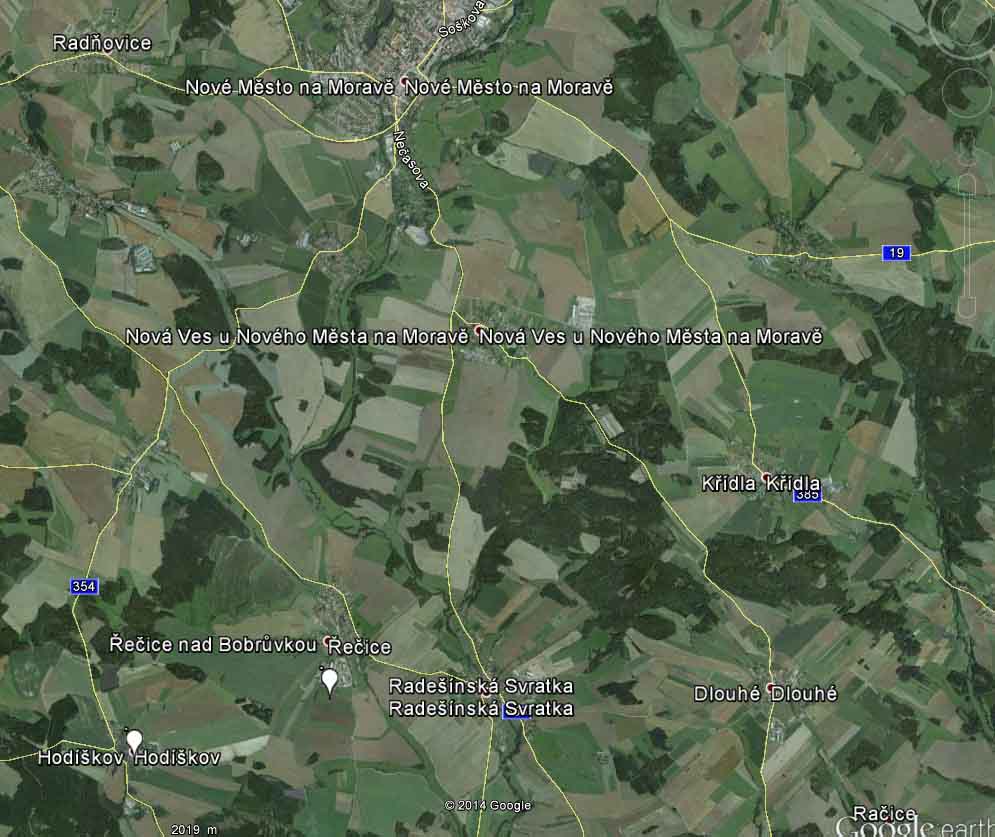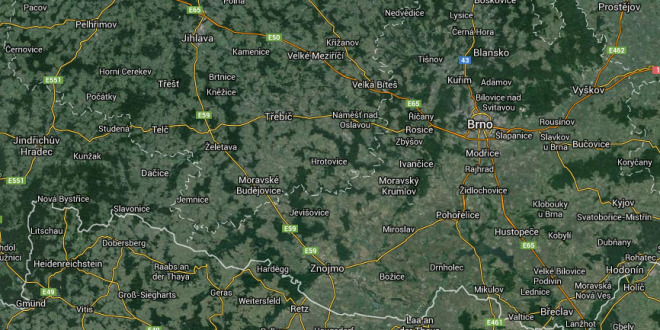[Žd’ár nad Sázavou] First meteorite found near Nová Ves, close to Nového Města na Moravě on 20 December, ~3 p.m. CET/ Meteorite fall near Rudolec, Jihlava district, Czech Republic, 9 December, 16:16:45-54 UT UTC
Update (24 May 2015)
Žd’ár nad Sázavou was registered in the Meteoritical Bulletin Database on 24 May 2015
UPDATE (2 January 2015):
A report from the Czech Astronomical Society about the meteorite search expedition, organized by Společnost pro meziplanetární hmotu (SMPH) and the Jihlavskou astronomickou společností (JAS), which led to the finding of the first meteorite
Interview with the finder Tomáš Holenda who found the 5.93 g meteorite (chondrite, L4) within one hour (~ 15:00 CET) after starting to search on 20 December 2014 at 14:00 CET (Source: blesk.cz, author: Jiří Čada). It’s an ordinary chondrite, type L.
Czech media coverage:
NOVA Televizni noviny (21 December 2014)
from 27:35 running time
Zprávy FTV Prima (21 December 2014)
from 22:08 running time
UPDATE (21 December 2014):
PHOTO: Finder Tomáš Holenda (left) and Pavel Spurný
PHOTO: Exact find location of first specimen
Source (blesk, author: Jiří Čada)
UPDATE (20 December 2014):
First meteorite find this afternoon near Nová Ves u Nového Města na Moravě
Czech Television report (ČT1 , 20 Dec 2014, 19:00 CET)
Czech TV interview (17 December 2014) with Jiří Borovička and Jan Kondziolka about the difficulty of finding meteorites in the hilly strewnfield around the village Rudolec
UPDATE (18 December 2014):
TV report about Spurný and the search for meteorites
Televize Vysočina (18 December 2014)
UPDATE (16 December 2014):
The main mass is expected to have fallen in forest southsouthwest of Rudolec (49°27’55.49″N, 15°48’59.46″E).
The public is asked to help searching. LINK
PRESS RELEASE by Pavel Spurný (download link at bottom of page)
Luminous trajectory seen from Observatory in Veselí nad Moravou
Seen from Lindenberg Observatory, Germany
52°12’31″N 14°07:17″E
6.4-7.5 seconds
(uploaded by André Knöfel)
Northeast to southwest, meteoroid trail might have ended somewhere southeast of Prague in the southern Czech Republic (maybe in the region Okres Trebic, between Brno and Trebic or Jindrichuv Hradec, Kraj Vysočina), not far from where Stannern fell.
Meteor seen from Valašské Meziříčí, Czech Republic
(video provided by Jakub Koukal)
Seen from Poland, Polish Fireball Network (PFN)
Capture of Polish Fireball Network station PFN41 in Twardogóra
BOLID of December 9, 2014 (Polish Fireball Network, 10 December 2014)
UPDATE: Pavel Spurný confirms a likely meteorite fall in the Žďár nad Sázavou region, but refuses to provide details fearing a rush of meteorite hunters with mainly commercial interests.




































